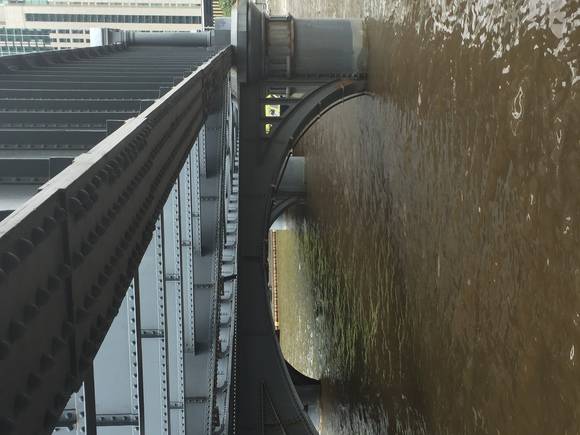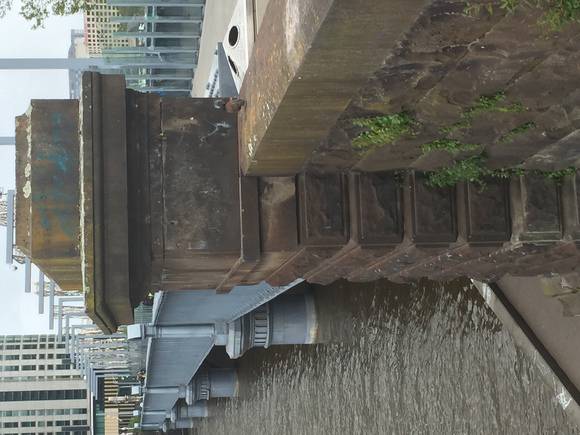| Back to search results » | Back to search page » |
|
SANDRIDGE RAILWAY LINE BRIDGE
Statement of Significance
What is significant? The Sandridge Railway Line Bridge was the third successive bridge at this location to carry the rail link from Flinders Street Station to Port Melbourne and St Kilda. The bridge is on the line of the original Hobson's Bay Railway Company line to Sandridge, the first passenger railway line in Australia in 1854. The bridge was designed by the Victorian Railways Department and the contract let to David Munro & Co in 1886. It is a metal girder bridge with five spans totalling 178m and with a maximum span of 36.9m. The four railway lines were opened for railway traffic in 1888. The Sandridge Railway Line Bridge is constructed from steel with hollow iron columns filled with concrete to support the plate girders and cross girders. The columns, set parallel to the stream flow in groups of three, were intended to reduce the impact of flooding. On either side of the river the steel girders are supported by bluestone and brick buttresses. On the south side the structure is continued as a brickwork viaduct. The location of the Flinders Street Station, the widening of the river and the great strength of its all-metal construction resulted in the unusual slanted angle of the bridge across the river, with the tracks at an angle of about 33 degrees to the stream flow. In 1925 overhead electrical masts were added and the original timber deck was replaced with rail and concrete slabs. The bridge is no longer used. How is it significant? The Sandridge Railway Line Bridge is of historical, technical and architectural significance to the State of Victoria. Why is it significant? The Sandridge Railway Line Bridge is historically significant as a surviving link across the River Yarra of Australia's first passenger railway line. The bridge has a strong historical association with the Port Melbourne and St Kilda railway lines which played a vital role in the development of Melbourne as a great commercial city of the nineteenth century. Each of these two lines was provided with twin tracks, making the bridge the first railway bridge in Victoria with more than two tracks. The bridge played a significant role in linking both port and recreational facilities with the city, facilitating the economic, suburban and demographic development of Melbourne. It is also historically significant as a notable example of the work of engineer, speculator and contractor David Munro, whose other work included Queens Bridge and Princes Bridge. The Sandridge Railway Line Bridge is technically significant as possibly the earliest example of the use of steel bridge girders on the Victorian railway system. The columns, innovative in construction design, are similar in design to Queens Bridge. The bridge is of considerable size, both in terms of its maximum span and its length. Its maximum span is among the ten longest metal girder bridge spans in Australia. The bridge is also an unusual example of bridge design for its skewed angle over the River Yarra. The Sandridge Railway Line Bridge is architecturally significant as an essentially intact and rare example of a building type, and as the only known example of a railway bridge in Victoria carrying substantial ornamentation. The bridge demonstrates a notable application of classical decorative schemes in its piers, columns, pediments, fanlight motifs and arched braces across the piers.
Group
Transport - Rail
Category
Railway Bridge/ Viaduct














